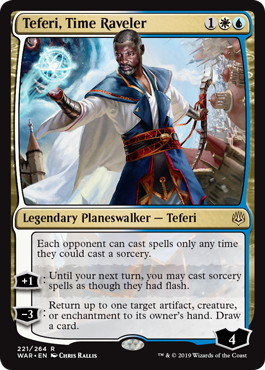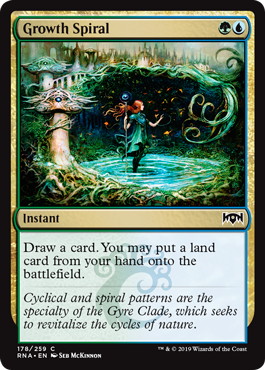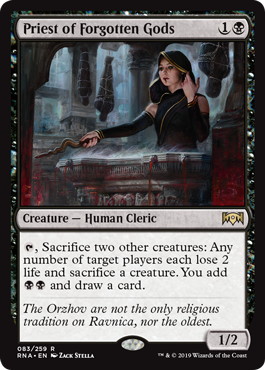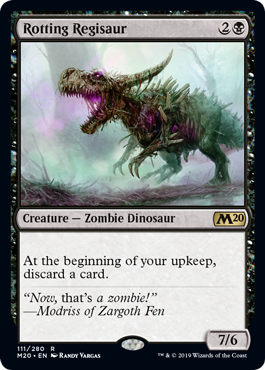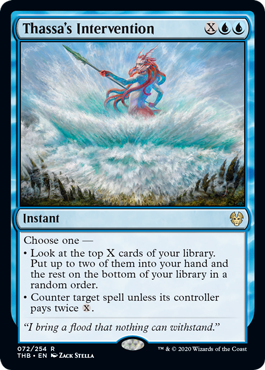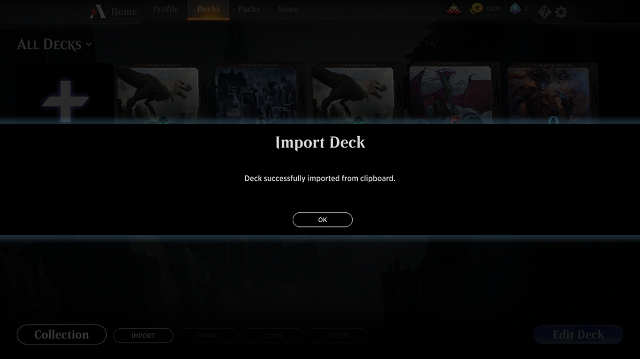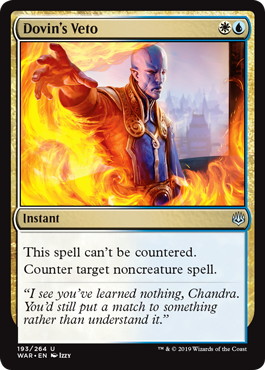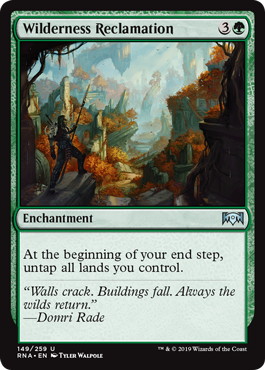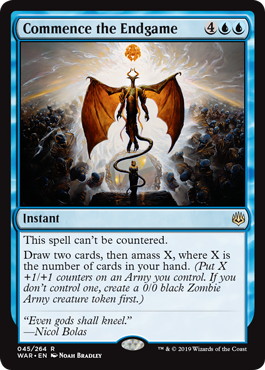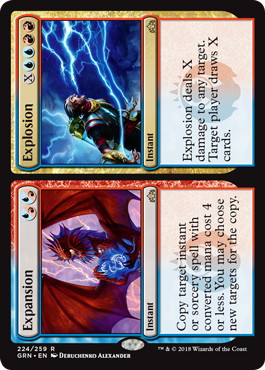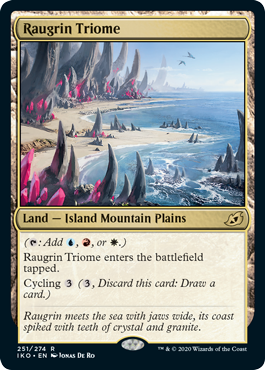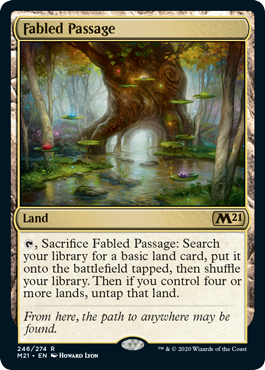My Players Tour Preparation
A couple weeks ago I played in Players Tour Online 2 to a 7-7 drop finish. While I had some motivation to do well in this tournament, I didn’t take it as seriously as any other Pro Tour, Mythic Championship, or regional Players Tour I’ve played. Thankfully I still had my large testing team of roughly 25 active participants, and few more passive ones, so I had a lot of resources and the ability to test matchups when I wanted to.
I decided early on I didn’t really want to experience facing down a 《Teferi, Time Raveler》 while playing Temur Reclamation, so I decided to focus on finding decks I thought were good against Temur Reclamation instead.
I figured the easiest place to start was Bant Midrange, as 《Teferi, Time Raveler》 is as good as it gets against Temur Reclamation, and 《Growth Spiral》 and 《Uro, Titan of Nature’s Wrath》 seemed too good not to play. I started with a list Allen Wu was working on, but I ended up with the same feeling I always get with Midrange decks, “How can I correctly guess how big or small I should be?”
It’s a decision that frequently prevents me from registering a midrange deck, I feel like if I don’t have an accurate read on how the metagame will be represented, I run the risk of playing a deck that’s unfavored against a majority of the field. On top of that I almost always end up skewing my midrange decks to beat aggro decks, because even though I understand that at this level I will be playing against incredibly skilled players, I still think that I have a skill edge against the majority of the field, and therefore can afford to have a slightly worse deck in the average midrange mirror.
Due to this feeling I started looking at other decks, the most interesting of which was a Jund Sacrifice deck featuring both 《Fiend Artisan》 and 《Priest of Forgotten Gods》, which my teammate Zach Dunn had come up with. The deck played 1-2 《Korvold, Fae-Cursed King》 and 0 maindeck 《Bolas’s Citadel》, and I really liked that it had a lower curve, but still a nice mana sink in 《Fiend Artisan》.
The Jund Sacrifice deck felt like it only had one bad matchup and was absolutely crushing the rest of the field, the problem was the bad matchup was Temur Reclamation. Combinations of hand disruption, 《Cindervines》, and 《Rotting Regisaur》 proved to be effective against Temur Reclamation, but we never felt like we were actually getting the matchup to feel favorable even if we dedicated almost our entire sideboard to it.
This is likely because Temur Reclamation is incredibly flexible in sideboarding, and provides a lot of different angles of attack. On top of that, 《Brazen Borrower》 seemed to be on an up-tick heading into the weekend of the first two Players Tours due to its effectiveness against Shark tokens, but it has splash damage of helping Temur deal with 《Rotting Regisaur》.
Looking at Kenrith
As I kept losing to Temur Reclamation (but still decided I didn’t want to play it) I started looking towards the idea of a Bant Reclamation deck, utilizing 《Kenrith, the Returned King》, 《Shark Typhoon》, and counterspells to make 《Wilderness Reclamation》 feel powerful, while also having access to 《Teferi, Time Raveler》 and 《Shatter the Sky》 as haymakers for different matchups.
On top of that all of my Reclamation payoffs still functioned against 《Teferi, Time Raveler》 themselves, so long as my counterspells were mostly either 《Thassa’s Intervention》 or 《Neutralize》. This was the list I first started with:
- Jacob Nagro
- – Bant Reclamation
- Test Deck
- (Standard)
2 《Island》
2 《Forest》
4 《Breeding Pool》
4 《Hallowed Fountain》
4 《Temple Garden》
3 《Raugrin Triome》
2 《Ketria Triome》
1 《Indatha Triome》
4 《Fabled Passage》
1 《Castle Vantress》
-Land (29)- 3 《Uro, Titan of Nature’s Wrath》
3 《Kenrith, the Returned King》
-Creature (6)-
3 《Aether Gust》
3 《Thassa’s Intervention》
1 《Mystical Dispute》
2 《Shatter the Sky》
4 《Wilderness Reclamation》
4 《Shark Typhoon》
4 《Teferi, Time Raveler》
-Spell (25)-
3 《Dovin’s Veto》
2 《Heliod’s Intervention》
2 《Shatter the Sky》
2 《Commence the Endgame》
1 《Aether Gust》
1 《Elspeth Conquers Death》
-Sideboard (15)-
After some testing with my teammate and local Albuquerque friend Alex Mitas, I discovered I still liked the Bant shell against Temur Reclamation in general, but 《Kenrith》 was surprisingly impressive. We immediately recognized that Temur’s interaction spells had a soft spot to the high toughness, white, creature spell, and that oftentimes he could just simply resolve if jammed, especially in a later turn with 3 extra mana to pay for a 《Mystical Dispute》.
This combined with the fact that 《Kenrith》 felt like an obvious haymaker against any aggressive strategy, because they frequently also didn’t play any interaction that could remove him from play. All of the sudden I felt like I had a solution to my classic midrange problem, because I had found a card that could stabilize me against aggro, but was also an effective threat against interactive decks.
Some of my teammates took interest in the idea of the deck and started working on it with various changes, and we all seemed to come to similar conclusions that the card 《Wilderness Reclamation》 wasn’t powerful enough to warrant so many copies, and 《Kenrith》 was incredibly impressive even without 《Reclamation》 backing him up.
While I really didn’t feel attached to the idea of including 《Wilderness Reclamation》 in my deck, I still felt like it might be one of my most powerful tools against Jund Sacrifice, as it would allow me to keep up with their engines if I combined it with 《Kenrith》 or was just able to make plays like escape 《Uro, Titan of Nature’s Wrath》 with counter backup. Eventually, teammate Brian Coval seemed to be the only one still working on this archetype, and we shared a lot of the same thoughts, down to playing 1 copy of 《Wilderness Reclamation》.
- Jacob Nagro
- – Bant Ramp with 《Kenrith》
- Players Tour Online 2
- (99th)
2 《Island》
2 《Forest》
4 《Breeding Pool》
4 《Hallowed Fountain》
4 《Temple Garden》
3 《Ketria Triome》
3 《Raugrin Triome》
1 《Indatha Triome》
4 《Fabled Passage》
-Land (29)- 4 《Uro, Titan of Nature’s Wrath》
1 《Knight of Autumn》
3 《Kenrith, the Returned King》
-Creature (8)-
2 《Aether Gust》
2 《Neutralize》
1 《Mystical Dispute》
2 《Shatter the Sky》
1 《Wilderness Reclamation》
2 《Elspeth Conquers Death》
4 《Shark Typhoon》
4 《Teferi, Time Raveler》
1 《Tamiyo, Collector of Tales》
-Spell (23)-
3 《Dovin’s Veto》
2 《Knight of Autumn》
2 《Aether Gust》
1 《Dream Trawler》
1 《Mystical Dispute》
1 《Shatter the Sky》
1 《Elspeth Conquers Death》
-Sideboard (15)-
This is what I ended up submitting for the Players Tour. Instead of being a Reclamation deck with White cards instead of Red cards, I became a Bant deck with 《Kenrith》. I actually just took a more stock Bant deck that Allen was playing and made the changes I wanted to include 《Kenrith》. Brian Coval played Bant 《Kenrith》 with some of his own changes, and Mark Jacobson played my 75, none of us finished extraordinarily well, and comically all 3 of us lost to Paulo Vitor Damo da Rosa on Temur Reclamation.
I ended up going 3-3 against Temur Reclamation, notably losing to Paulo, Matt Nass, and Noah Walker. After some reflection I realized in 1v1 testing with my teammates I was playing a version that included cards like 《Commence the Endgame》 or 《Brazen Borrower》, and not considering how much of an impact they were making in the matchup, and ultimately omitted them from my final list. In all 3 of the Temur matchups I lost, almost every game felt incredibly close, and I wish I had just respected the archetype a little bit more.
That being said, I was still really happy to have found 《Kenrith》 and I was happy with him throughout the entire tournament, including the couple Bant Mirrors I played where cards like 《Teferi, Time Raveler》 and 《Elspeth Conquers Death》 could heavily punish him.
While a card like 《Hydroid Krasis》 is likely better in a Bant Mirror, 《Kenrith》 still offers a lot of unique pressure in a long game, as he scales incredibly hard with the amount of mana you have. Sometimes you might be able to play him with a 《Dovin’s Veto》 to protect him from 《Elspeth Conquers Death》, and then untap and give an 《Uro, Titan of Nature’s Wrath》 or Shark Token haste.
Also this deck has access to 《Kenrith》’s Green ability, which I learned pretty early on in testing is a lot more powerful than it looks. It’s really not uncommon for a 《Kenrith》 to end the game the turn after he is played thanks to just his first two abilities, and he also makes combat an absolute nightmare, just because of the threat of activation. If you end up trying out 《Kenrith》 I’d highly recommend paying attention to the clock you can threaten if you were to put 2 counters on your creatures rather than draw a card, because I believe that is often the correct play.
Playing it all
It’s a classic move in midrange/control heavy metagames to start looking at 4 and 5 color archetypes in order to go over the top of the field. We’ve begun seeing that as some Temur Reclamation players have added white to include 《Teferi, Time Raveler》 themselves, which I think is quite the strong move if you don’t expect a lot of aggro. The Triomes, shocklands, and 《Fabled Passage》 allow you to play 4 colors without too many colored mana issues, mostly just the issue of increasing your tapped land count and therefore also needing to shock yourself more frequently.
Thiago Rodrigues pointed out to me that a friend of his, Yohan Dudognon, played 4 color Reclamation in Players Tour 4, and ended up finishing 8-7 with the following list.
- Yohan Dudognon
- – 4 color Reclamation
- Players Tour Online 4
- (87th)
1 《Island》
1 《Mountain》
1 《Forest》
4 《Breeding Pool》
4 《Hallowed Fountain》
4 《Temple Garden》
4 《Raugrin Triome》
2 《Ketria Triome》
3 《Fabled Passage》
1 《Temple of Plenty》
2 《Castle Vantress》
1 《Blast Zone》
-Land (29)- 3 《Uro, Titan of Nature’s Wrath》
1 《Brazen Borrower》
1 《Kenrith, the Returned King》
-Creature (5)-
2 《Aether Gust》
2 《Dovin’s Veto》
1 《Thassa’s Intervention》
3 《Mystical Dispute》
2 《Shatter the Sky》
4 《Expansion/Explosion》
4 《Wilderness Reclamation》
2 《Shark Typhoon》
2 《Teferi, Time Raveler》
-Spell (26)-
2 《Kenrith, the Returned King》
2 《Aether Gust》
2 《Shatter the Sky》
2 《Shark Typhoon》
1 《Essence Scatter》
1 《Dovin’s Veto》
1 《Flame Sweep》
1 《Commence the Endgame》
1 《Teferi, Time Raveler》
-Sideboard (15)-
I wish I had just looked to doing something like this myself for the Players Tour, but due to a smaller window of testing and a fear of aggro decks arising I didn’t want to explore adding a color to Temur Reclamation.
The same weekend as the 2nd set of the Players Tour, David Inglis, or better known as tangrams, finished 10-1 in the Mythic Invitational Qualifier with his own take on 4 color Reclamation.
- David Inglis
- – 4 color Reclamation
- Mythic Invitational Qualifier
- (10-1)
1 《Plains》
1 《Mountain》
1 《Forest》
4 《Temple Garden》
2 《Breeding Pool》
2 《Hallowed Fountain》
2 《Stomping Ground》
4 《Ketria Triome》
4 《Raugrin Triome》
4 《Fabled Passage》
2 《Castle Vantress》
-Land (29)- 3 《Uro, Titan of Nature’s Wrath》
2 《Brazen Borrower》
-Creature (5)-
2 《Negate》
2 《Scorching Dragonfire》
3 《Mystical Dispute》
4 《Expansion/Explosion》
4 《Wilderness Reclamation》
4 《Shark Typhoon》
3 《Teferi, Time Raveler》
-Spell (26)-
3 《Aether Gust》
2 《Justice Strike》
2 《Negate》
2 《Flame Sweep》
1 《Devout Decree》
1 《Chemister’s Insight》
1 《Solar Blaze》
-Sideboard (15)-
This is now my favorite list I’ve seen utilizing 《Kenrith》. The maindeck seems very close to maximizing his Temur Reclamation matchup in the first game, and his sideboard offers the ability to still utilize 《Kenrith》 to dodge all of the interaction players would normally use against Temur Reclamation. Meanwhile 《Kenrith》 also fills the role of being an anti-aggro card that forces a red deck to end the game immediately or get buried in life gain and +1/+1 counters.
The other amazing thing about this deck is it doesn’t have to worry about 《Wilderness Reclamation》 not being powerful as it still has access to 4 Explosions and 4 《Shark Typhoon》, but also can utilize 《Wilderness Reclamation》 with 《Kenrith》 to go over the top of Jund Sacrifice.
Moving forward I would expect this deck to be an important metagame call in Standard, similar to how in Ixalan Standard some players played with Temur Energy, and some players added Black for 《The Scarab God》 and 《Vraska, Relic Seeker》. If the field is all midrange and control, you can easily just move to a 4 color deck that doesn’t have to care so much about casting spells on the first couple turns.
Thinking about Kenrith moving forward
While it seems most of 《Kenrith》’s success has only existed with 《Fires of Invention》 and 《Wilderness Reclamation》, I think it will be important to keep him in mind even after rotation.
Even without cheating on mana he offers a sort of 《Baneslayer Angel》 effect of needing an immediate answer, while also becoming your most threatening draw in a deck that expects to hit its land drops and ramp a little throughout the game. While we don’t always build our decks to have access to 10+ mana in our games, in a Standard with 《Uro, Titan of Nature’s Wrath》 I expect these long games to continue to happen. In those games 《Kenrith》 can still come down as a 5/5 haste that draws a card, gains life, or perhaps just gets in a couple extra damage, all while becoming so much more threatening each turn you untap with him.
Thanks to the Triomes and 《Fabled Passage》 being legal at the same time, I expect 4 color green 《Kenrith》 decks to continue to be a strong metagame call after this fall’s rotation.
For the time being, I’m excited to see if more 4 color Reclamation make an impact at the Players Tour Finals, and how much of an impact Core Set 2021 can make on the format. As always, thanks for reading, and feel free to contact me on twitter (@jacobnagro).



